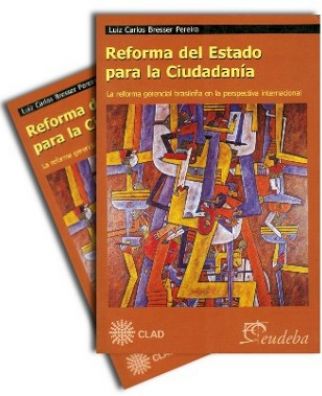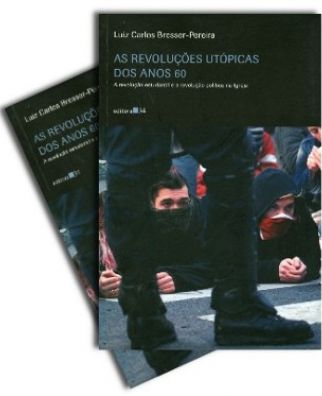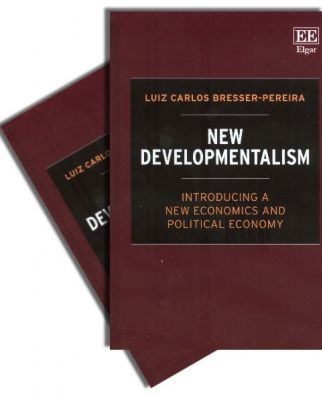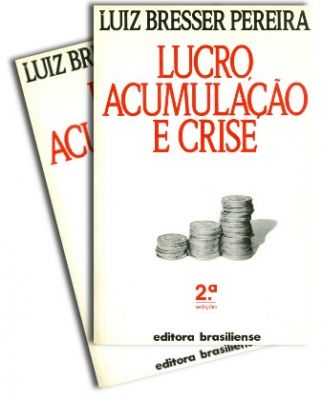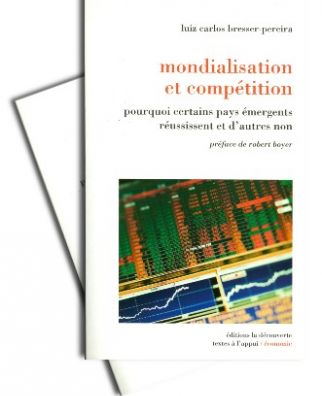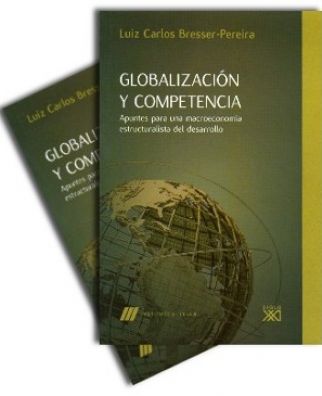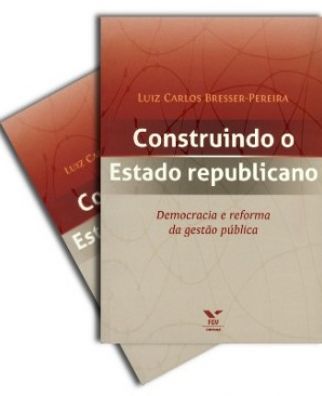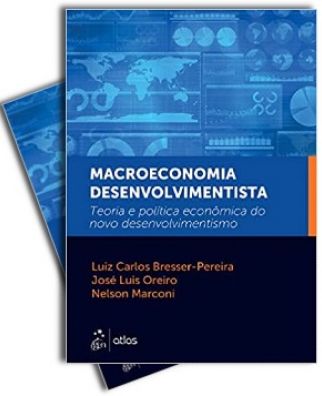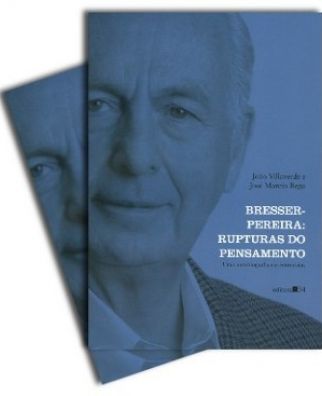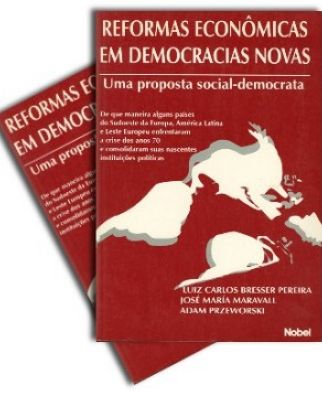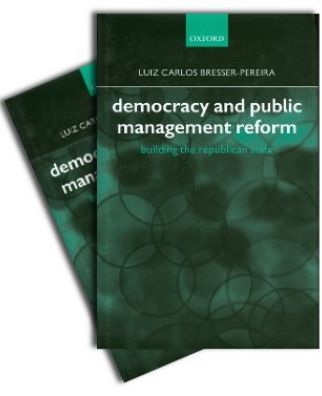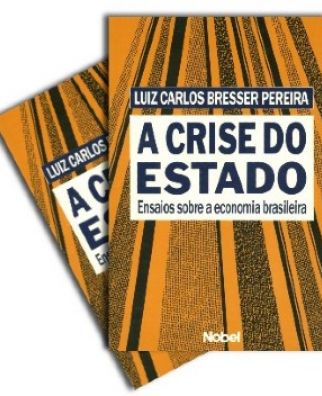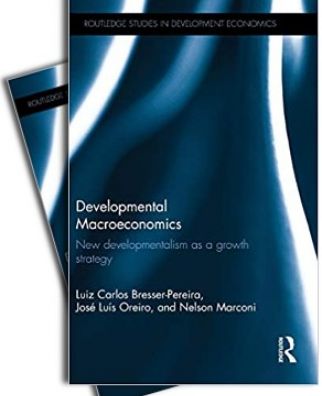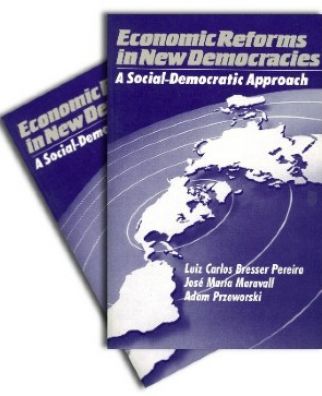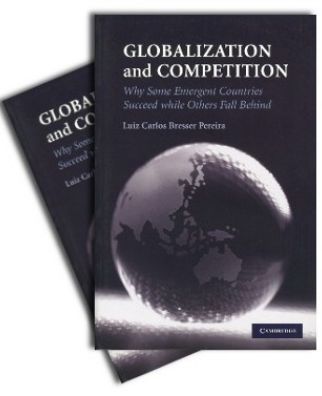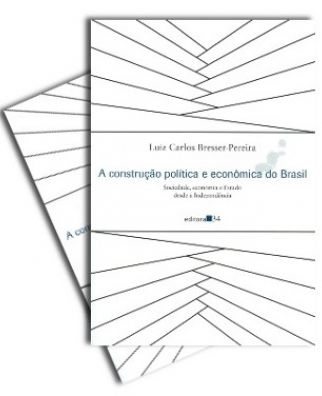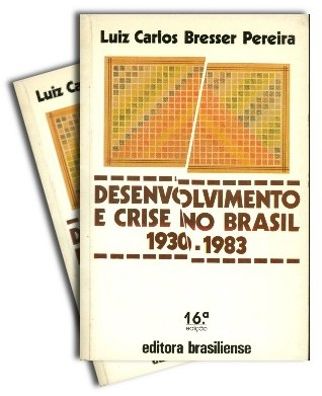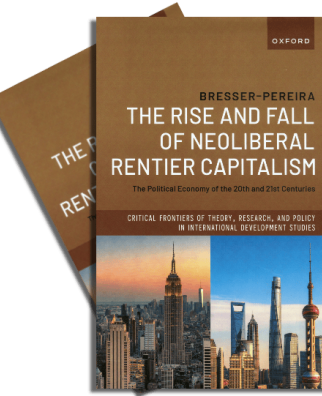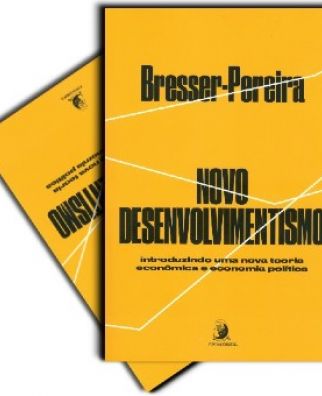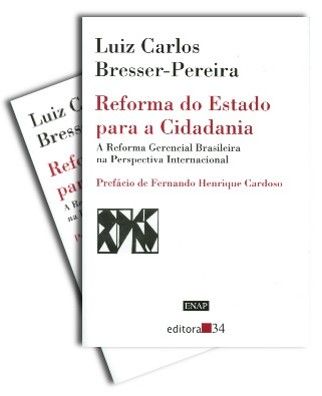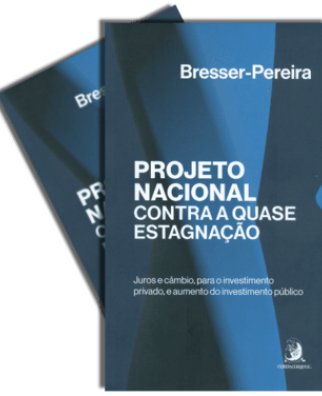2022. This paper explains the two long-term causes of 40 years of quasi-stagnation of the Brazilian economy: the liberalization trap, which eliminated the neutralization of the Dutch disease and made the exchange rate overvalued and the fall in public investments. (Brazilian Journal of Political Economy)
BRAZILIAN ECONOMY
QUASI-STAGNATION FROM 1980
2021. From the 1980s, Brazil quasi-stagnated while East-Asia continued to grow. What went wrong? (Paper in Economic Dynamics and Structural Change)
2020. Ex-ministro dos governos Sarney e FHC, Bresser-Pereira demonstra preocupação com o futuro da economia do país e pede mais investimentos por parte do Estado. (Entrevista a Zero Hora)
2017. An encompassing analysis of Brazil's society, economy, and politics since the Independence. A national-dependent interpretation. In the bookstores and in kindle
2020. Latin America was not caught in the 'middle-income trap" but into the "1980s' liberalization trap", while East Asia overcome its middle-income condition and are today rich countries, or, in the case of China, heading to become so. (Paper BJPE)
2019. The Brazilian economy is deindustrializing and quasi-stagnant for 40 years. The main economic and political causes and what must be done. (essay: Jornal dos Economistas. English Version available
2019. The Brazilian economy is deindustrializing and quasi-stagnant for 40 years. The main economic and political causes and what must be done. The original of this article was published in Portuguese, in Jornal dos Economistas June 2019.
2017. The Brazilian economy is quasi stagnant since the 1980s. Public savings are insufficient to finance public investments. Since 1990, it is caught in a high-interest rate-overvalued currency trap that makes the competent industrial firms not competitive and unable to invest. (Paper in Handbook)
2019-Thirty year ago the Brady Plan solved the great 1980s' Foreign Debt Crisis. The Plan was entirely based in the proposal that I, as Finance Minister of Brazil, made in October 1987. The Secretary of the Treasury of the time, James Backer, rejected it, but 18 months later the new Secretary, Nicholas Brady, took it entirely. Read the full history in "A turning point for the debt crisis". Nota no Facebook, 22.4.2019
2021. An encompassing analysis of Brazil's society, economy, and politics since the Independence. A national-dependent interpretation. (Book: Editora 34, updated 4th edition, 2021). Nas livrarias e Em kindle.
2003. The patterns of economic development and the political pacts in Brazil from Vargas (1930) to Lula (2003). 5th revised edition almost doubling the size of the book. (Book: Editora 34). Nas livrarias.
2007. An encompassing analysis of the Brazilian macroeconomic system. A first presentation of the developmental macroeconomics. Why Brazil failed to grow fast after the Real Plan. (Book: Editora 34) Out of print; availble in this site. English version available: Developing Brazil (2009).
2006. Either PT or PSDB have an answer on how to face and overcome the Brazilian economy's 26 years old quasi-stagnation because they lost the idea of nation. (Interview to Rodrigo de Almeida: Jornal do Brasil).
2006. In order to become again a real nation Brazil needs a encompassing national agreement, where the association between businessmen and the state bureaucracy is key. (Note in , Economia Brasileira na Encruzilhada)
2004. The critique of the growth cum foreign savings strategy adopted in the Cardoso administration. Foreign finance does not cause growth. Spanish version available. (Paper: International Journal of Political Economy)*
2004. The growth cum foreign savings strategy and the consequent exchange rate evaluation is the basic cause behind Cardoso administration's poor economic performance. Translation of "O Segundo Consenso de Washington e a Quase-estagnação do Brasil". (Paper: Problèmes d'Amérique Latine)*
2004. With Carmen Varela. Latin Americas quasi-stagnation in the 1990s can be explained principally by the growth cum foreign savings strategy. (Paper: Journal of Post Keynesian Economics)
2003. The perverse macroeconomic model of the Brazilian economy combining high interest rate and low exchange rate with growth with foreign savings and quasi-stagnation. (Paper: Análise Econômica)*
2002. Review of Celso Furtados book Em Busca de Novo Modelo. (Revista de Economia Política)
2002. The growth cum foreign savings strategy and the consequent exchange rate evaluation is the basic cause behind Cardoso administration's poor economic performance. (Revista de Economia Politica, 23(3) July 2003).*

